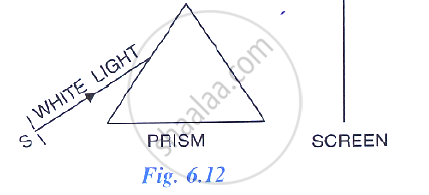Advertisements
Advertisements
Question
Name three factors on which the deviation produced by a prism depends and state how does it depend on the factors stated by you.
Solution
The following four factors affect the deviation the prism produces:
- The angle of incidence: As the angle of incidence increases, first the angle of deviation decreases and reaches a minimum value for a certain angle of incidence. By further increasing the angle of incidence, the angle of deviation is found to increase.
- The material of the prism (i.e., refractive index): for a given angle of incidence, the prism with a higher refractive index produces a greater deviation than the prism with a lower refractive index.
- Angle of prism: The angle of deviation increases with the increase in the angle of the prism.
- The colour or wavelength of light used increases the angle of deviation with a decrease in the wavelength of light.
APPEARS IN
RELATED QUESTIONS
How does the deviation produced by a triangular prism depend on the colours (or wavelengths) of light incident on it?
In following diagram shows a thin beam of white light from a source S striking on one face of a prism.

A slit is placed in between the prism and the screen to pass only the light of green colour. What will you then observe on the screen?
Draw another diagram to show how the colours of spectrum of white light can be combined to give the effect of white light.
Name the radiation of a wavelength longer than 8 × 10−7 m.
Explain, why quartz prism is required for obtaining the spectrum of ultra-violet light?
A prism causes dispersion of white light while a rectangular glass block does not. Explain.
Which colour of white light travels slowest, in glass?
Write the approximate wavelength for red light.
